AN IMPRESSIVE VICTORIAN MAHOGANY QUARTER-CHIMING LONGCASE REGULATOR Smith and Sons, London, mid 19th century The substantial four double-screwed columnar pillar triple train movement with plates measuring 9.75 by 10.25 inches and six-spoke wheel crossings throughout, the going train with Harrison's maintaining power and deadbeat escapement regulated by mercury jar compensated pendulum incorporating fine beat adjustment to crutch, the quarter train chiming on a graduated nest of eight bells and the hour sounding on a large coiled gong, the 12 inch circular single-sheet silvered brass Roman numeral dial with subsidiary seconds and STRIKE/SILENT, FULL CHIME/WESTMINSTER CHIME selection dials to the centre signed SMITH & SONS., ST. JOHN'S SQUARE., CLERKENWELL., with blued steel spade hands set within canted silvered bezel, the substantial case with ogee-capped concave-sided upstand, stylised twist baton carved cavetto cornice and repeating scroll decorated frieze over recessed quadrant panels around the dial aperture to hood door flanked by canted angles and with deep-set foliate scroll pierced arched sound frets to sides, the trunk with urn finials over complex top mouldings and repeating split baton frieze to throat above arch-glazed door enclosing silvered pendulum beat scale flanked by Egyptian style faceted three-quarter columns with stylised leafy caps and flared moulded bases, the plinth of inverted breakfronted form decorated with crisply moulded panels to front over tall skirt with complex upper mouldings. 217cm (85.5ins) high, 66cm (26ins) wide, 34cm (13.5ins) deep. The clockmaking business of John Smith and Sons of Clerkenwell can trace its roots back to 1780 however gained much greater significance when they became established in St. John's Square, at the former manufactory of Colonel Mangier, from 1844. The firm ran extensive workshops which incorporated a dedicated brass foundry, clock case workshop and assembly areas for the various types of clocks produced and was featured in the 20th September 1851 issue of the Illustrated London News in an article entitled Visit to a Clerkenwell Clock Factory. At the Great Exhibition held that year they exhibited a year going calendar clock and another chiming clock, chiming on 8 bells and striking on a gong. Ultimately John Smith and Sons perhaps became best known for their skeleton clocks, many of which illustrated in their 1865 catalogue including models based on Litchfield Cathedral and York Minster, however they also produced many fine chiming bracket clocks, longcase regulators, wall clocks and public clocks. The business continued to produce clocks until 1938 when, due to the decline in demand for mechanical timepieces, they diversified to become specialist material stockholders and still continue in this role today. It has been traditionally thought by vendor's family that the current lot was exhibited at the 1851 Great Exhibition. Although there is no evidence to support this, the movement and case are certainly of very fine quality hence would warrant this belief. Interestingly a quarter chiming longcase clock shown by Smith and Sons at the Paris 1900 Exhibition survives in the collection of The National Trust at Castle Drogo, Devon (object/902584). This clock also has a three train four pillar movement with Harrison's maintaining power, mercury jar pendulum and chimes the quarters on eight bells or four gongs, and is housed in an elaborate Chippendale style gilt brass mounted mahogany case. Condition Report: Lot 135 The movement is in fine clean fully working condition having being relatively recently serviced (prior to the former owner's death). The level of mercury in the pendulum needs topping-up (is low) and there is staining to the interior of the glass jar. The dial generally is in fine clean condition but does have a couple of light spots of tarnishing. The case is in fine condition with faults limited to the small section of angled cornice moulding to the front
AN IMPRESSIVE VICTORIAN MAHOGANY QUARTER-CHIMING LONGCASE REGULATOR Smith and Sons, London, mid 19th century The substantial four double-screwed columnar pillar triple train movement with plates measuring 9.75 by 10.25 inches and six-spoke wheel crossings throughout, the going train with Harrison's maintaining power and deadbeat escapement regulated by mercury jar compensated pendulum incorporating fine beat adjustment to crutch, the quarter train chiming on a graduated nest of eight bells and the hour sounding on a large coiled gong, the 12 inch circular single-sheet silvered brass Roman numeral dial with subsidiary seconds and STRIKE/SILENT, FULL CHIME/WESTMINSTER CHIME selection dials to the centre signed SMITH & SONS., ST. JOHN'S SQUARE., CLERKENWELL., with blued steel spade hands set within canted silvered bezel, the substantial case with ogee-capped concave-sided upstand, stylised twist baton carved cavetto cornice and repeating scroll decorated frieze over recessed quadrant panels around the dial aperture to hood door flanked by canted angles and with deep-set foliate scroll pierced arched sound frets to sides, the trunk with urn finials over complex top mouldings and repeating split baton frieze to throat above arch-glazed door enclosing silvered pendulum beat scale flanked by Egyptian style faceted three-quarter columns with stylised leafy caps and flared moulded bases, the plinth of inverted breakfronted form decorated with crisply moulded panels to front over tall skirt with complex upper mouldings. 217cm (85.5ins) high, 66cm (26ins) wide, 34cm (13.5ins) deep. The clockmaking business of John Smith and Sons of Clerkenwell can trace its roots back to 1780 however gained much greater significance when they became established in St. John's Square, at the former manufactory of Colonel Mangier, from 1844. The firm ran extensive workshops which incorporated a dedicated brass foundry, clock case workshop and assembly areas for the various types of clocks produced and was featured in the 20th September 1851 issue of the Illustrated London News in an article entitled Visit to a Clerkenwell Clock Factory. At the Great Exhibition held that year they exhibited a year going calendar clock and another chiming clock, chiming on 8 bells and striking on a gong. Ultimately John Smith and Sons perhaps became best known for their skeleton clocks, many of which illustrated in their 1865 catalogue including models based on Litchfield Cathedral and York Minster, however they also produced many fine chiming bracket clocks, longcase regulators, wall clocks and public clocks. The business continued to produce clocks until 1938 when, due to the decline in demand for mechanical timepieces, they diversified to become specialist material stockholders and still continue in this role today. It has been traditionally thought by vendor's family that the current lot was exhibited at the 1851 Great Exhibition. Although there is no evidence to support this, the movement and case are certainly of very fine quality hence would warrant this belief. Interestingly a quarter chiming longcase clock shown by Smith and Sons at the Paris 1900 Exhibition survives in the collection of The National Trust at Castle Drogo, Devon (object/902584). This clock also has a three train four pillar movement with Harrison's maintaining power, mercury jar pendulum and chimes the quarters on eight bells or four gongs, and is housed in an elaborate Chippendale style gilt brass mounted mahogany case. Condition Report: Lot 135 The movement is in fine clean fully working condition having being relatively recently serviced (prior to the former owner's death). The level of mercury in the pendulum needs topping-up (is low) and there is staining to the interior of the glass jar. The dial generally is in fine clean condition but does have a couple of light spots of tarnishing. The case is in fine condition with faults limited to the small section of angled cornice moulding to the front
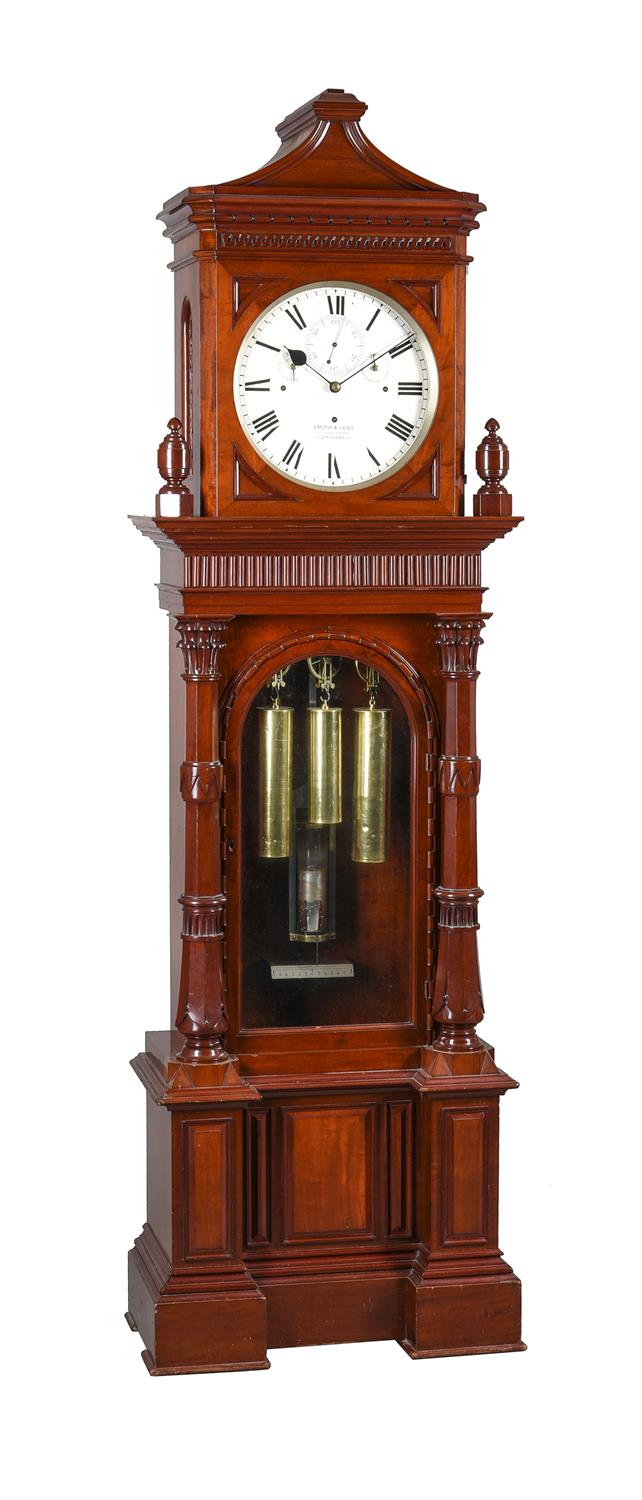
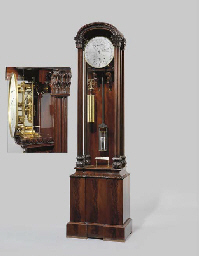
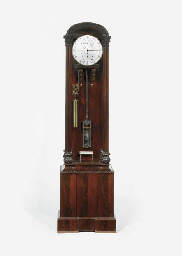
.jpg)





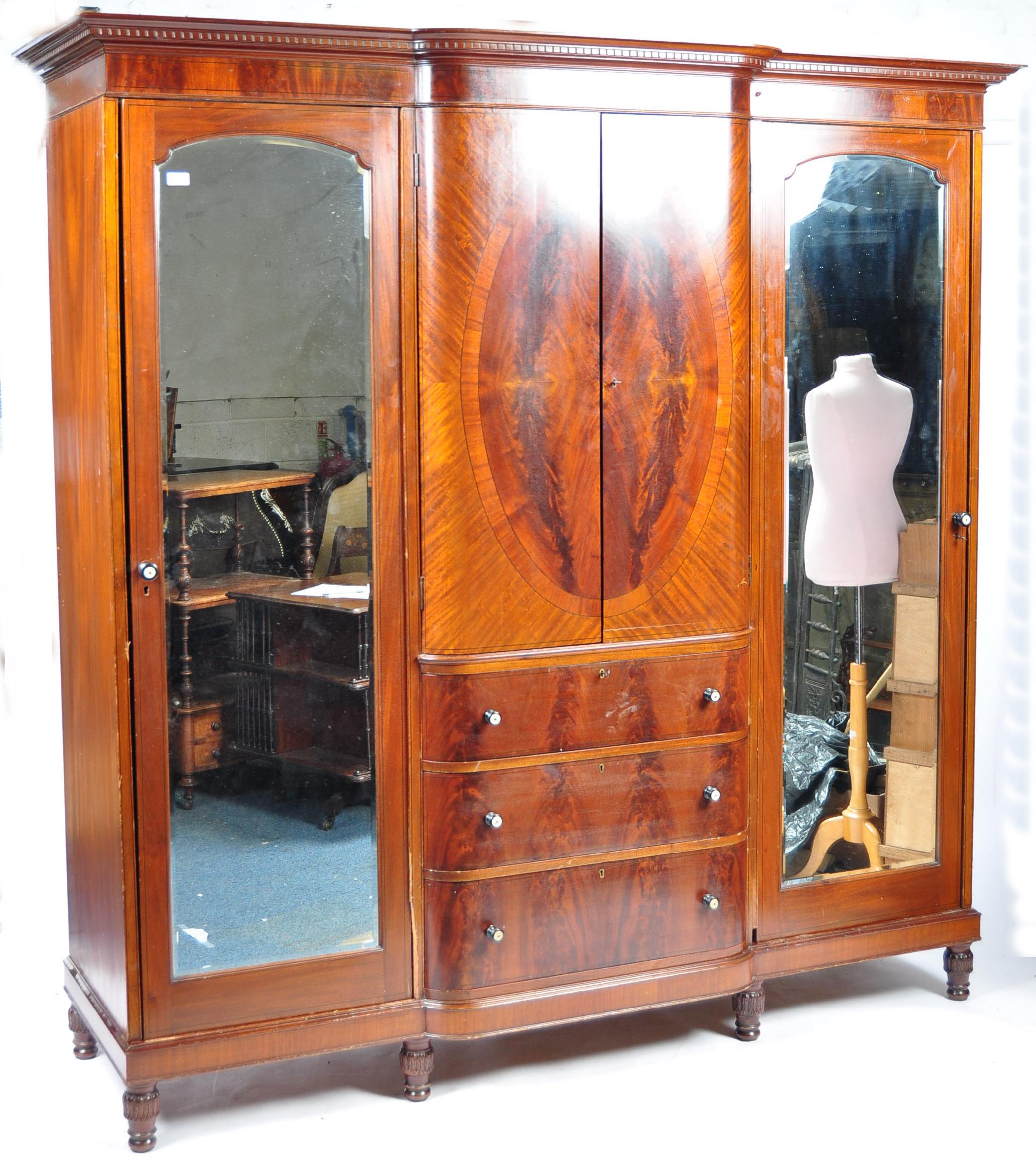
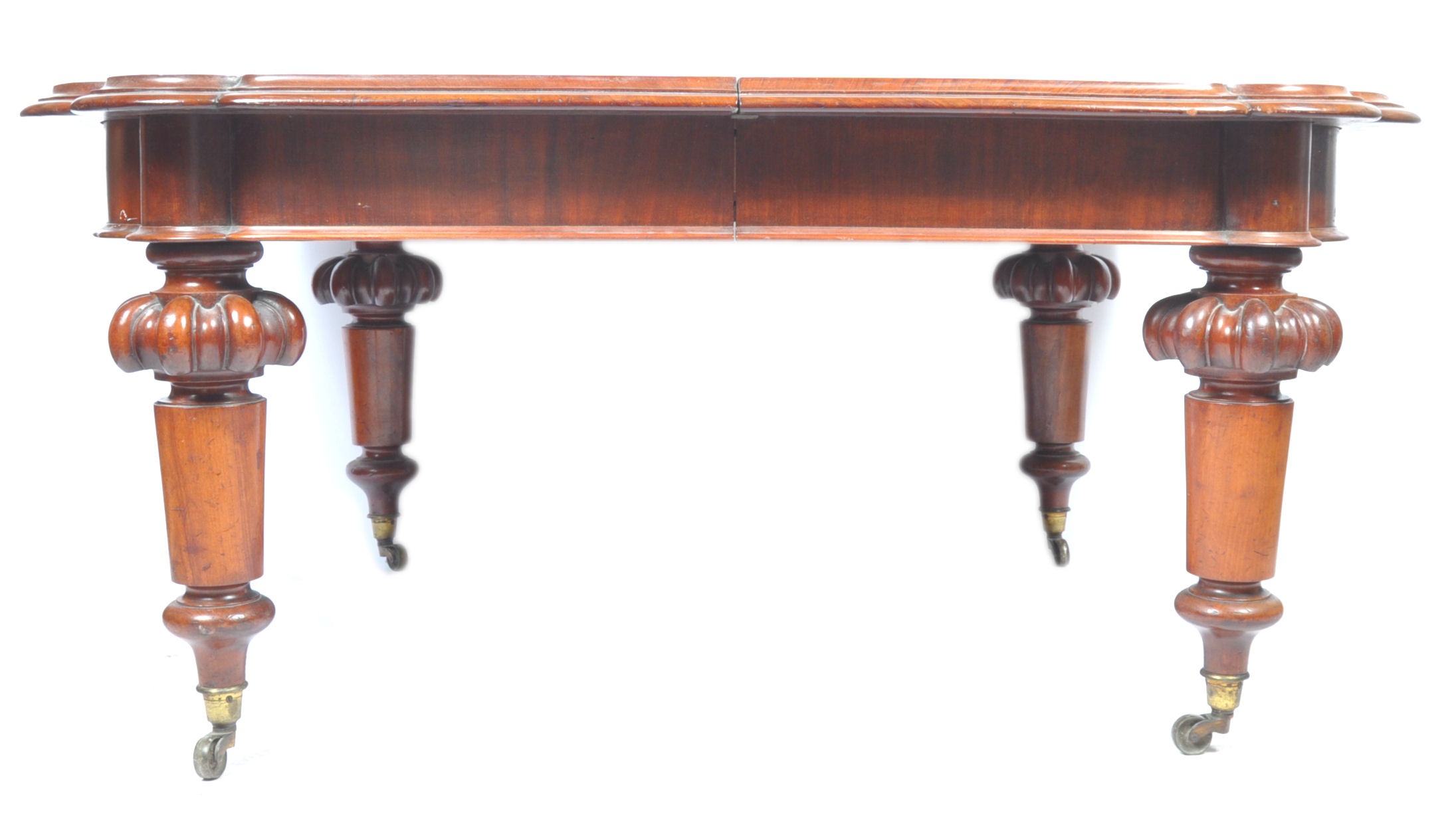
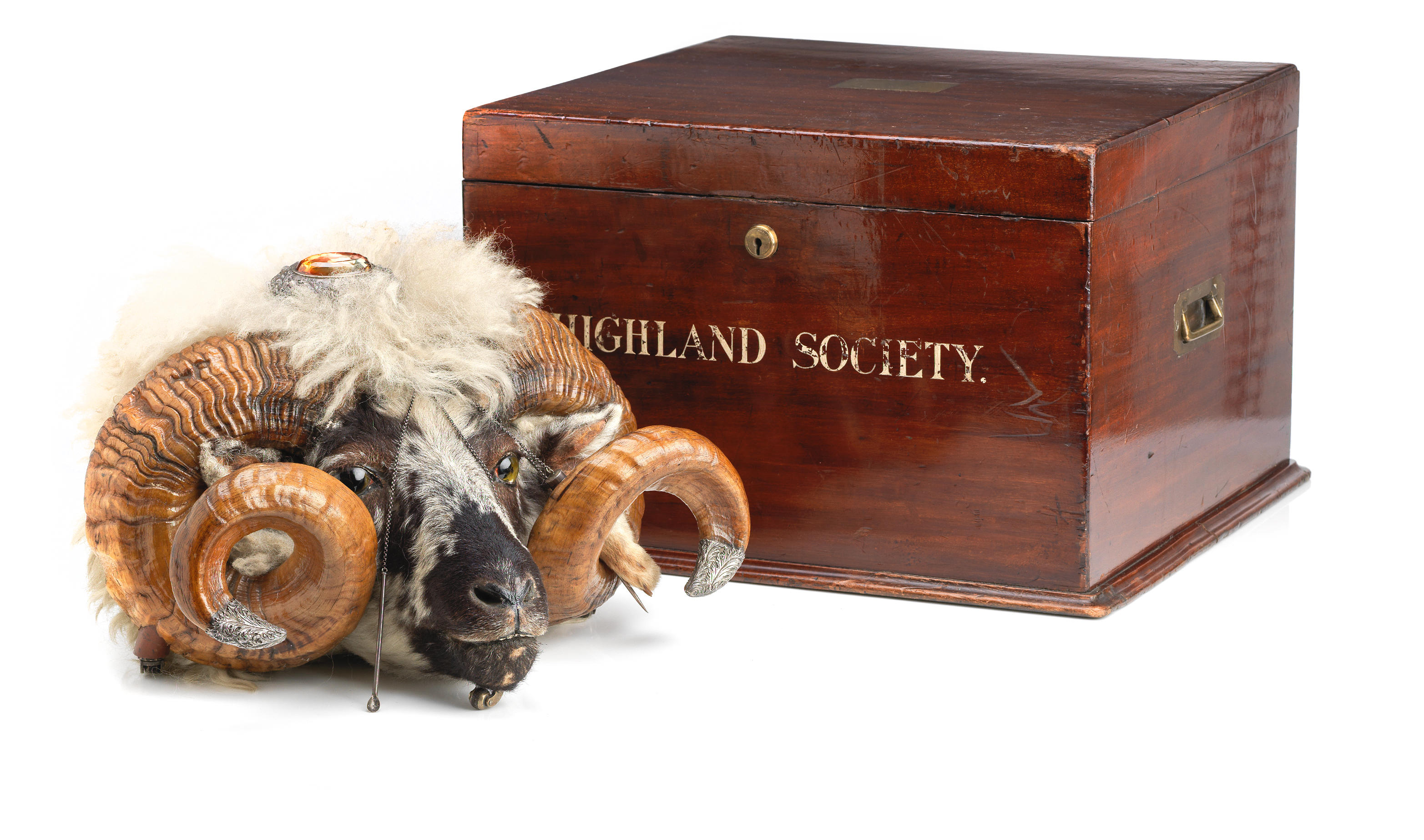
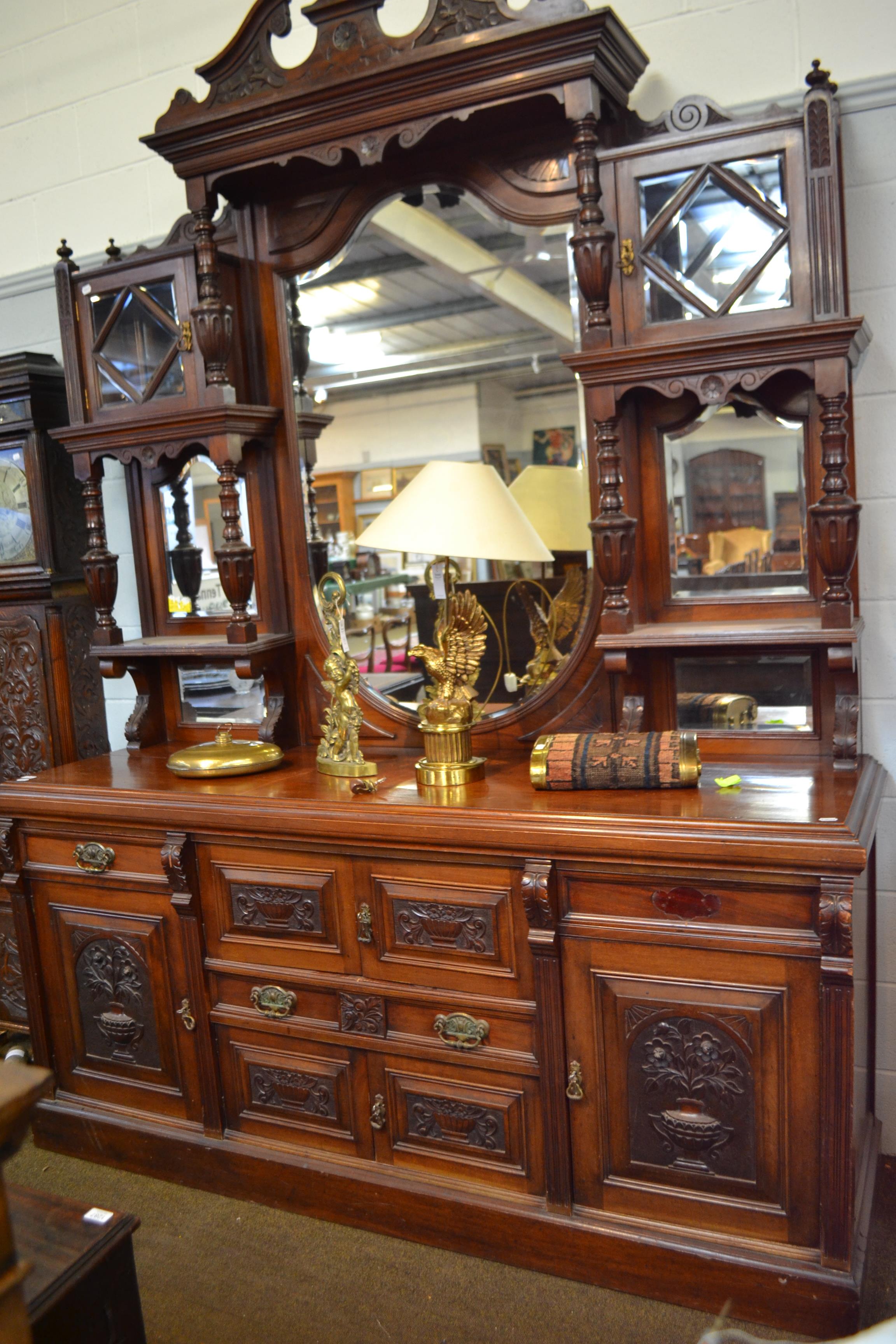

Testen Sie LotSearch und seine Premium-Features 7 Tage - ohne Kosten!
Lassen Sie sich automatisch über neue Objekte in kommenden Auktionen benachrichtigen.
Suchauftrag anlegen